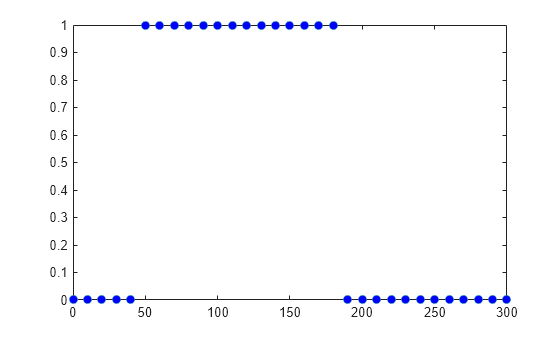SimBiology.Observable
Object containing expression for post-simulation calculations
Description
An observable object is a mathematical expression that lets you perform post-simulation calculations. For example, you can define an observable expression to compute the fraction of a ligand that is bound to a receptor at each time step, or compute some statistics such as area under the curve (AUC) of a drug concentration profile. You can also use an observable object as a response in simulation, data fitting, and global sensitivity analysis.
The name of each observable object in a SimBiology® model must be unique, meaning no observable object can have the same name as
another observable, species, compartment, parameter, reaction, variant, or dose in the model.
An observable object can reference any model quantities that are logged (in
StatesToLog). It can also reference other active observable objects
provided that the expressions contain no algebraic loops. The object expression can reference
simulation time using the variable time. Follow the recommended guidelines for
expression evaluations. For instance, if a quantity name is not a valid MATLAB® variable name, enclose the name in brackets [] when referring
to it in an expression.
SimBiology evaluates the object expression using the entire time course of any referenced
states or observables. The result of an observable expression must be a numeric scalar or
vector. If it is a vector, it must be of the same length as the simulation time vector. The
result is stored in the returned SimData object. Specifically, if the
observable expression is scalar-valued, the result is stored in the
SimData.ScalarObservables property. Otherwise, it is stored in
SimData.VectorObservables.
Note
Make sure to correctly vectorize the expressions. For example, use
A./(A+B)instead ofA/(A+B)if A and B are matrices.Avoid hardcoding expressions that expect any particular number of points or times. For example, instead of using
time(1:1000), usetime(1:min(1000,numel(time))).
Creation
Create an observable object using addobservable.
Properties
Object Functions
copyobj | Copy SimBiology object and its children |
findUsages | Find out how observable object is used in SimBiology model |
get | Get SimBiology object properties |
set | Set SimBiology object properties |
delete | Delete SimBiology object |
display | Display summary of SimBiology object |
rename | Rename SimBiology model component and update expressions |
Examples
Version History
Introduced in R2020a

